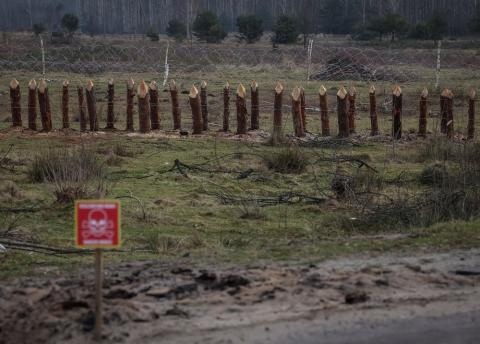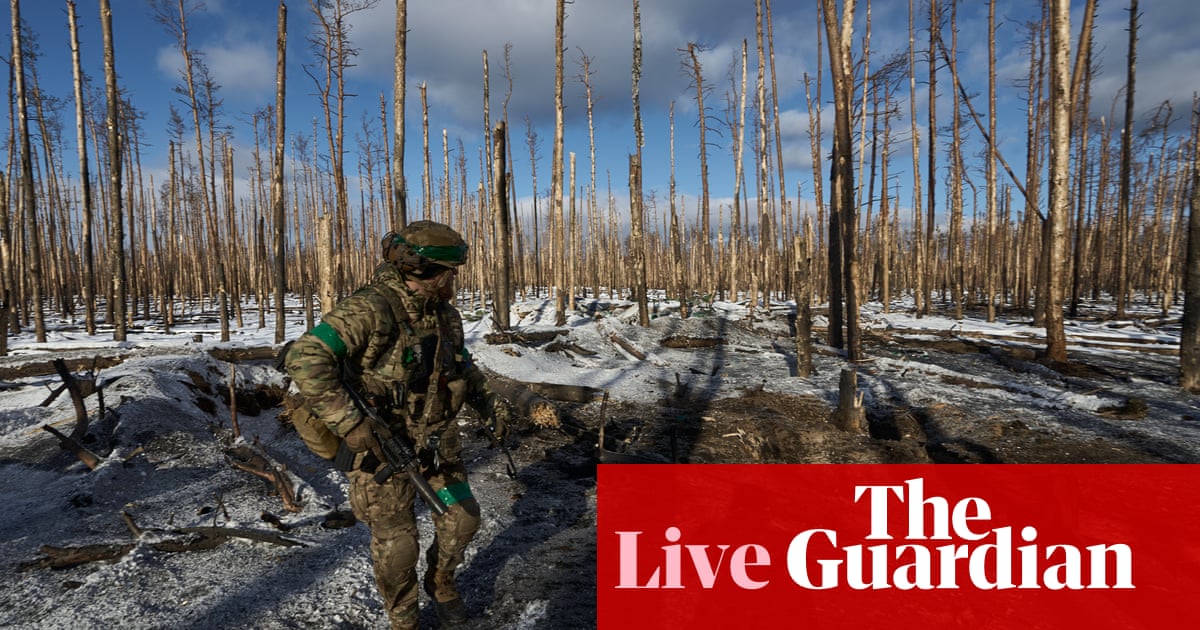
Russia and Belarus will begin 10 days of joint military drills on Thursday, setting in train one of the most overtly threatening elements of the Kremlin’s buildup of forces around Ukraine’s borders.
Valery Gerasimov, the head of the Russian general staff, arrived in Belarus on Wednesday to oversee the drills.
Russia has moved up to 30,000 troops, two battalions of S-400 surface-to-air missile systems and numerous fighter jets into Belarus for joint training exercises with the Belarusian army. Satellite imagery shows much of the hardware has been moved to locations close to the border with Ukraine.
The Russian president, Vladimir Putin, reportedly told France’s Emmanuel Macron this week that the troops would leave Belarus when the exercises ended on 20 February. Even if that does happen, the drills show that Belarusian dictator, Alexander Lukashenko, is a firm ally in Putin’s Ukraine policy.
“Lukashenko will not be able to resist giving Belarusian territory for whatever purposes Russia needs it, whether it’s marching through, using Belarusian military facilities, airbases, maybe potentially even the air defence system,” said Artyom Shraibman, a Belarusian political analyst.
From the border with Belarus, it is only about 130 miles (210km) down a highway to Kyiv, Ukraine’s capital, and the joint exercises add a new front to a potential Russian assault on Ukraine. There is also a threat from the south, where Russia annexed the Crimean peninsula in 2014, and from the east, where Moscow has directed an insurgency against Kyiv’s authority and has massed troops close to the Russia-Ukraine border.
When Russia first invaded Ukraine back in 2014, Lukashenko remained studiously neutral, despite the fact Belarus and Russia are theoretically part of one “Union State”. He refused to recognise annexed Crimea as Russian territory, and maintained warm relations with the then Ukrainian president, Petro Poroshenko.
Privately, he told Poroshenko he would not allow Belarusian territory to be used by Russia in any attack against Ukraine. When Volodymyr Zelenskiy was elected in 2019, Lukashenko again extended the hand of friendship.
“You have never had any problems from the territory of Belarus and with Belarus, you will never have them. We will always be the most kind and reliable of your supporters and partners,” Lukashenko told Zelenskiy in October 2019.
Then, in August 2020, huge protests erupted in Belarus when Lukashenko declared an overwhelming victory in a rigged presidential election. The protest movement came within a whisker of toppling his regime, but Lukashenko regained control with a crackdown.
After staying silent for some days, the Kremlin eventually decided to back its troublesome ally, offering Lukashenko support and financial backing as most western countries imposed sanctions and refused to recognise the election results.
“Russia is slowly trying to extract the price for that support, and we’re seeing Lukashenko do things that he’s always resisted before,” said Nigel Gould-Davies, a former British ambassador to Belarus and a senior fellow at the International Institute for Strategic Studies.
The announcement of the exercises, which came after Russia had already started massing troops close to the Ukrainian border, was a sign of Lukashenko’s willingness to support Moscow. In recent weeks, he has made several demonstrative statements to prove his loyalty is beyond doubt.
“For the west, it’s important to drown the Russian-Ukrainian brotherhood in blood,” Lukashenko said two weeks ago, speaking in his annual address in front of an audience of thousands. “However much some people might not like it, we will return Ukraine into our Slavic fold.”
In an interview this week with Vladimir Solovyov, a pro-Kremlin television presenter, Lukashenko went further, saying that if Ukraine launched an assault on Donbas, he would send Belarusian troops to fight alongside Russian troops to repulse the attack.
“The Belarusian army will act in exactly the same way as the Russian army, it will be a joint response. Do you think we’re joking around on the southern border today?” he asked, referencing the joint training exercises. Lukashenko has also recently offered to host Russian nuclear weapons in Belarus.
Shraibman said neither of these things were likely to happen, noting Lukashenko’s usual mode was to promise a lot and then attempt to extract concessions. “I think his deeds, actions will always be behind his promises. No matter what he promises to Putin it’s not a given that he will actually deliver,” he said.
This was illustrated by a recent announcement in Moscow suggesting Belarus would send troops to aid Russian forces in Syria, which was quickly downplayed by Lukashenko. Still, the Belarusian leader’s room for manoeuvring has been severely curtailed and he appears to have little choice but to allow Russia’s military to use Belarusian territory how it pleases in the posturing against Ukraine.
With backing from Moscow and control over the security forces and army, Lukashenko’s domestic position appears secure for now, even as his foreign policy is more and more dictated by Moscow. Most opposition figures have either been jailed or forced to flee the country.
Later this month, he will hold a constitutional referendum, widely dismissed as illegitimate by western countries, that analysts say is meant to pave the way for him to step back from the presidency at some point but retain overall control.
Sviatlana Tsikhanouskaya, who stood against Lukashenko in the rigged elections in 2020 and later fled to neighbouring Lithuania, has criticised the joint exercises and Lukashenko’s support for Moscow’s stance on Ukraine. “Belarusians aren’t a threat to Ukraine, the regime is,” she said last week, after holding a video conference with several Ukrainian MPs.












